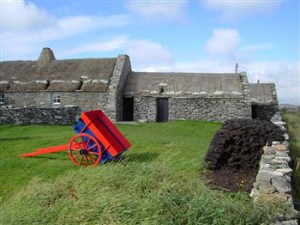
Countryside property prices in Scotland rose by an average £665 per month over the past decade, according to new research.
Average house prices in rural Scotland doubled in value over the same period.
Rural property prices rose from £79,104 in 2001 to £158,923 in 2011, the latest annual Bank of Scotland Rural Housing Review says.
Whilst average property prices in rural areas have increased by 101% over the past 10 years, in comparison urban areas saw an average increase of £64,263 (91%) – or £535 per month – from £70,463 to £134,726.
House price growth in rural Scotland outpaced the increase seen in rural Britain as a whole, with average prices rising by 54% to £196,316.
Five rural areas have seen average property prices more than double over the last decade. The largest increases were in Moray (162%) followed by Aberdeenshire (150%), the Highlands (143%) and Dumfries and Galloway (110%).
Aberdeenshire is the most expensive rural local authority district in Scotland with an average house price of £198,970; 25% – or £40,000 – above the Scottish rural average (£158,923). East Lothian is the next most expensive with an average property price of £172,638.
East Ayrshire (£103,981) is the least expensive rural area in Scotland.
The strength in rural property prices over the past decade has resulted in housing becoming less affordable for buyers on average incomes. This is particularly true in the northern areas which have some of the least affordable rural areas in the country.
The Highlands are the least affordable rural area in Scotland – measured by the house price to earnings ratio – with an average house price that is 5.7 times local gross annual average earnings.
The price to earnings ratio for all rural areas is 5.0. This compares with an average of 4.2 for urban areas.
There is only one rural area where the ratio of prices to earnings is below the historical long-term average of 4.0 – East Ayrshire (3.4).
Nitesh Patel, housing economist at Bank of Scotland, said: “Living in the countryside is an aspiration for many homeowners, attracted by the prospect of a better quality of life, open space and a cleaner environment.
“This ideal for a life in the country has come at a cost with house prices doubling in value over the past decade in Scotland – more than in urban areas.
“However, for first-time buyers average price has risen by even more, limiting their prospects for getting on the housing ladder.”

